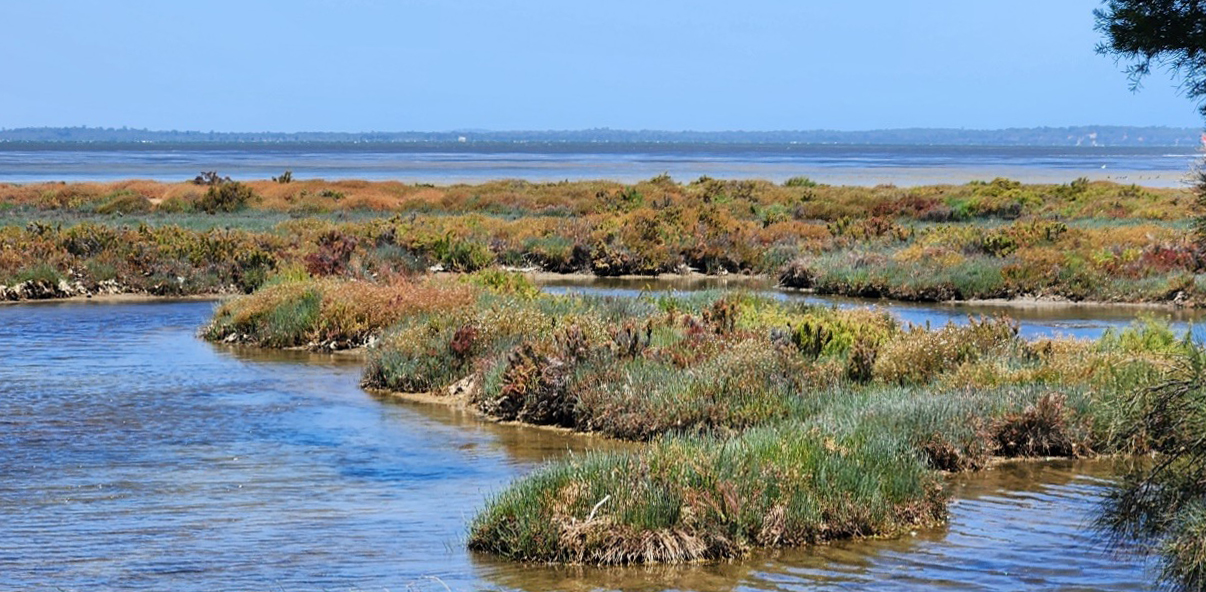Benchmarking biodiversity to evaluate the effectiveness of salt marsh restoration
Benchmarking biodiversity to evaluate the effectiveness of salt marsh restoration

Establishing a scientifically valid baseline measure as benchmarking of key biodiversity indicators before initiating restoration efforts in the Venice saltmarshes is crucial for assessing the effectiveness of Vital’s restoration projects.
Margherita Scapin, researcher and project officer at We are here Venice (WahV), within the context of both the WaterLANDS project (GA. 101036484) and the Vital initiative, has been working with Associate Professor Judith Fisher [1] for the past year to adapt and implement an innovative methodology for benchmaring biodiversity, developed over the past decade in Western Australia and implemented in over 50 locations, across a wide range of ecosystem types. It provides a comprehensive ecological measure of change in relation to the initial baseline situation. Baseline measures provide a reference point that captures the pre-restoration conditions of an ecosystem. This allows for comparison over time, enabling the assessment of changes and the effectiveness of restoration efforts.

Baseline measures enables the assessment of changes and the effectiveness of restoration efforts.
Successive repetitions of the ecological survey according to the Fisher methodology provides key information for adjusting or continuing restoration actions, as well as informing strategy for future restoration at other sites, for example to identify where restoration is needed the most and on what kind of parameters (e.g., vegetation species).
Comprehensive Biodiversity Monitoring
A comprehensive biodiversity monitoring is being conducted in parallel via the Vital initiative and WaterLANDS project at a selection of infill sites and natural salt marshes, in the central lagoon where the restoration efforts are concentrated. Twenty six biodiversity indicators have been determined within the context of changing water levels due to tidal dynamics.
The emphasis is on functional characteristics of key plant families like Sarcocornia (samphires, glassworts, saltworts) and Spartina (cordgrass) and population dynamics in terms of the percentage cover as well as species recruitment over time to see before and after restoration. In addition, this methodology allows for general habitat assessment because the condition and quality of the demarcated areas are recorded, not just according to plant communities but also in terms of disturbance factors like erosion or litter. Finally, the Fisher methodology not only facilitates species-level assessments but also includes consideration of biotic relationships at a landscape level. Utilizing the same GIS system as the other monitoring and surveying activities, we can use data as well as visual information to understand species interactions, trends and dynamics thereby enhancing our ecological insights.

Building economic and ecological cases for landscape-level restoration
As deployment of the Fisher methodology progresses, it is due to be accredited under the Accounting for Nature® Standard which is a transparent, affordable, verifiable and certifiable environmental accounting framework to inform investment, policy and management decisions concerning natural capital. The comprehensive nature of the approach in terms of plant communities, functional relationships and trends in habitat quality also provides information relevant to the local communities in terms of livelihoods and cultural values.
Efforts to close the “biodiversity financing gap”[2] via innovative and emerging instruments such as biodiversity credits [3] urgently need to ensure that there is an underlying scientifically valid methodology to measure the baseline state of biodiversity prior to any restoration interventions.
“It has been so stimulating working with the We are here Venice team who are so committed to obtaining positive outcomes for the salt marshes of the Venice Lagoon and for the positive future of Venice”
Based on this, Vital has chosen the Fisher methodology for its science backed standard to measure, manage and provide future public and private investors with reliable evidence that the project they are interested in has a solid and comprehensive baseline against which to determine the effectiveness of the restoration project over time. The development and implementation of biodiversity metrics and taxonomies and the incorporation of these into ecosystem accounting are essential to build a stronger economic case for biodiversity conservation and restoration (Convention of Biological Diversity (CBD), 2024).
The application of this methodology in Venice is expected to attract high-integrity nature markets so that funding can flow towards restoration and protection at a landscape-level for the lagoon as a wetland system and benefits are delivered to local ecosystems and communities on the long term, and not based on their exclusion.

Footnotes:
[1](Fisher Research Pty Ltd and The University of Western Australia).
[2]Biodiversity financing gap: the difference between the current global financing for biodiversity and the future funding needs to protect planetary nature between now and 2030 (Deutz, A., et al. 2020. Financing Nature: Closing the global biodiversity financing gap. The Paulson Institute, The Nature Conservancy, and the Cornell Atkinson Center for Sustainability).
[3]Biodiversity credits (also referred to as certificates) are a new instrument aimed at channelling capital into local conservation practitioners and communities, to mobilise resources and incentivise restoration and conservation of biodiversity. These credits are not offsets, but instead facilitate payments to support projects that protect, restore or positively manage biodiversity. The Kunming-Montreal GBF has identified biodiversity credits as a potential instrument to help deliver positive biodiversity outcomes (CBD, 2024).
◾